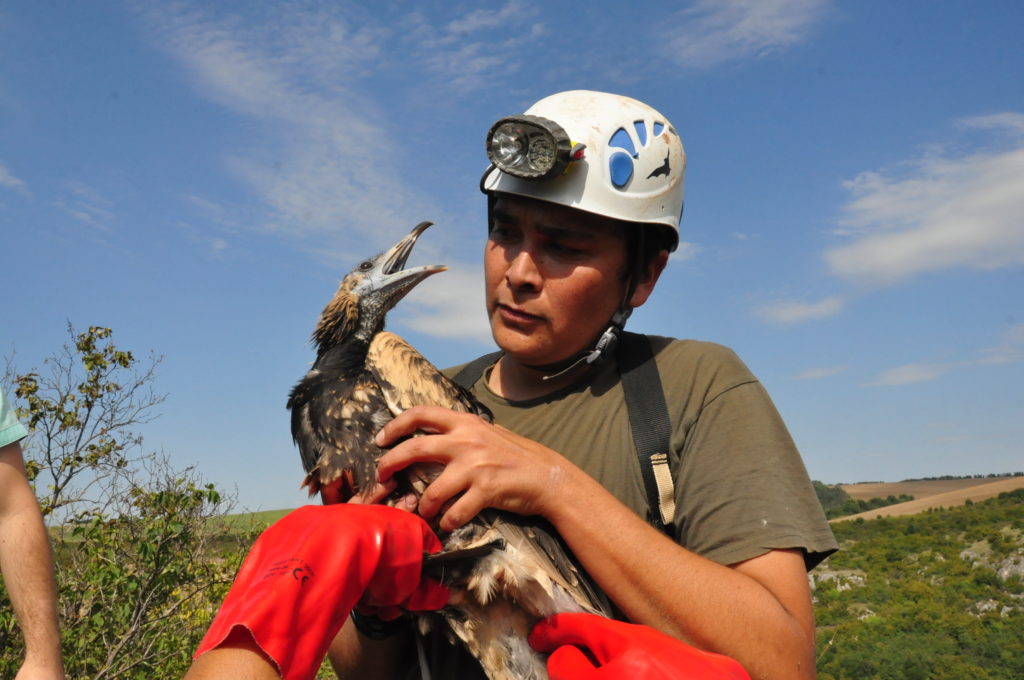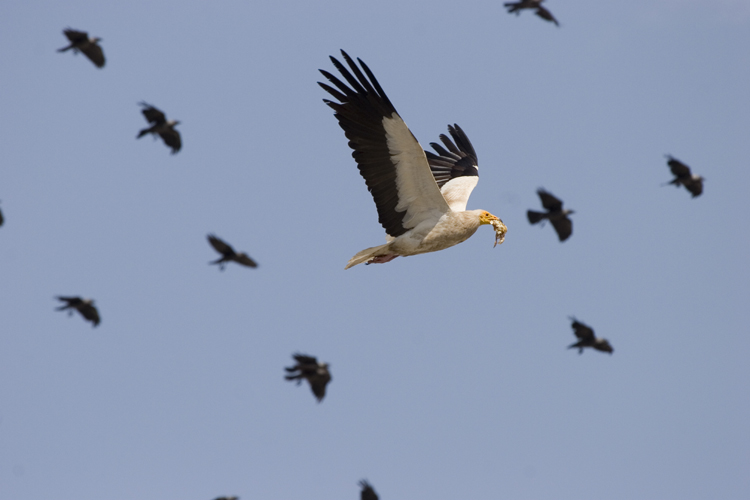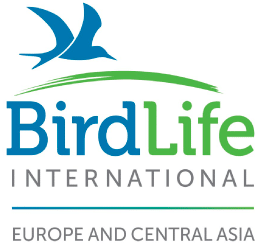On May 15th 2019, three young Egyptian vultures named Fer, Andi and Panteley, were released from different zoos in the Eastern Rhodopes mountains after having spent just over two months in a special adaptation aviary. The birds were tagged with GPS-GSM transmitters by a team from the Bulgarian Society for the Protection of Birds (BirdLife in Bulgaria) and Green Balkans. The satellite transmitters will allow the experts to track their behavior in nature, and in case the birds die – understand when, where and how it occured.
The three vultures hatched last year and are part of an experimental program with the aim to find the best approach to future restocking program for the Balkan population. The birds are released through the ‘delayed release’ method, where young birds are kept for about eight months after hatching and then placed in an adaptation aviary in the wild. It is believed that by releasing them the following season, they can adapt better and have enough time and experience to cope with their first migration – the most deadly challenge young Egyptian vultures face in the Balkans.
Only 1 out of 10 juvenile Egyptian vultures survive at sea during their first migration. Vultures are soaring birds, and need thermals to migrate – something they cannot find at sea. So why are these birds flying over open waters? Because of the small numbers of this population, they lack pre-migratory congregations, and have few experienced birds who can lead the non-experienced juveniles to Africa.
The reasoning to why the delayed release method will help a higher number of these birds to survive is based on:
- Provision of longer period of adaptation – released birds can practice flying, finding food, getting into good shape for four months, while wild juveniles only have a month to do this.
- Older birds are actually more clever, and make wiser decisions which helps them survive. Out of the 30 Egyptian vultures which have been GPS tagged so far, the decision to return back to land after beginning flying over open sea was only observed in the birds which were delayed released.
The method was first implemented in Bulgaria last spring when four young birds were released through this adaptation aviary. Thanks to the transmitters, the team of the LIFE project “Egyptian vulture New LIFE” tracked their adaptation and migration. Now everyone can track the movements of these four vultures and the three new birds released.

© AsjaVasileva
One month in the wild
It has already been one month since Fer and Andi were released into the wild in Bulgaria. The two young Egyptian vultures faced numerous challenges in the beginning – they had to find safe places to spend the night, and handle the attacks of the crows and ravens. Andi immediately started visiting the feeding station near the release site, whereas Fer needed a few days to realise where the safe food was. After overcoming hunger, the two vultures spent more time practicing their flight abilities by simply soaring up with the help of the warm air thermals or gliding over the cliffs and even swirling towards the ground and then proudly rising up. They quickly learned how to repel the crows and even started teasing them back! Day after day Andi and Fer built up their confidence, and gained the strength and experience they needed to face their ultimate challenge – surviving in the wild!

©Melih Özbek
Andi was the first to start exploring the Eastern Rhodopes mountains, making one-day trips, first to the east, then south, then north and east again. He was slowly increasing his range and visiting the territories of other Egyptian vultures. One day he decided to go to Greece and less than three hours later he was in the Greek mountain range. Andi stayed two days in the territory of Iliaz, another Egyptian vulture, and made his first attempt at breeding this year. For those who don’t know – Iliaz is an Egyptian vulture we tagged with a GPS transmitter as a chick in Eastern Rhodopes in 2012. He is now an adult and last year he found a partner and settled in a breeding territory in Greece. We were able to follow his life from the very beginning. Andi was actually roosting not far away from Iliaz’s nest so obviously the two were getting along well. A week later Andi visited Greece again, but this time flew straight towards Dadia National Park and joined the Black vulture colony for the weekend.
Meanwhile, Fer is still more attached to the feeding station and the release site. He started moving east and north and also visited the territories of other Egyptian vultures. Tourists managed to snap his picture while feeding with a big group of Griffon vultures at the feeding station near Madzharovo, Bulgaria. Fer seems to be very calm and is always friendly with the other birds visiting the feeding station. He now flies extremely well, and has no problems spotting spotting carcasses in the wild.
Fer’s bigger brother joined the club of immature vultures in early June. Panteley was released in the same location a year ago. He was raised by the same parents as Fer in Jerez Zoo, Spain. Panteley spent the winter in Crete and has now returned to the release site. During the first few days following his return, he was intensively feeding and recovering from his migration. Once he was rested and had replenished his energy, Panteley began exploring Bulgaria. First, he made a one-day visit to Sakar mountain, followed by a two-day visit to Turkey and the Strandzha mountain. After a while, he went even further and undertook his longest trip ever to reach the Danube river in the north of the country. Then he moved southwest from the release site and reached the lowlands near Plovdiv. The flat landscape in this area wasn’t to his liking, so he quickly returned to the mountains. After his travels, Panteley always returns to the feeding station in Eastern Rhodopes.
You can track the movements of all tagged Egyptian vultures here, and support the vital work of our partners to keep Egyptian vultures safe today.
